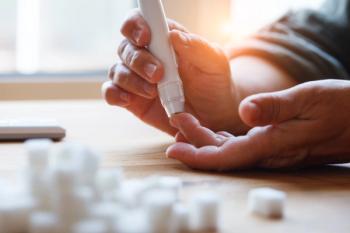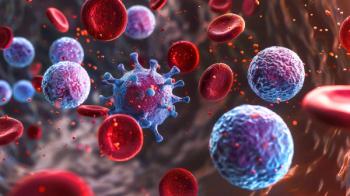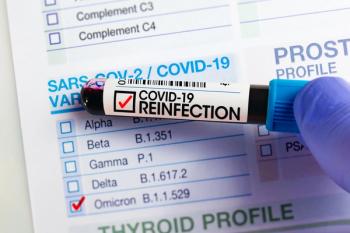
Lower Dose of IVIG Remains Effective in Treating Pediatric Immune Thrombocytopenia Compared With Higher Dose
Key Takeaways
- A single 1 g/kg IVIG dose is as effective as 2 g/kg for pediatric ITP, with fewer adverse events and lower costs.
- Both dosing regimens achieved similar sustained platelet responses and remission rates, with no significant difference in chronic disease incidence.
By utilizing a lower dose, patients can avoid potential adverse events and high financial burden.
An initial treatment for patients with newly diagnosed pediatric immune thrombocytopenia (ITP) of 1 g/kg intravenous immunoglobulin (IVIG) demonstrated comparable effectiveness to the double dose of 2 g/kg without negatively impacting the incidence of chronic disease, according to the results of a recent study published in Therapeutic Advances in Hematology.1
ITP typically resolves itself spontaneously, but 20% of patients will have a chronic course that lasts more than 1 year. In new-onset pediatric ITP, IVIG is utilized as a first-line treatment to lower the risk of bleeding and severe complications as a result. However, several dosing regimens are currently in use for initial treatment; they can vary between 0.4, 0.8, and 1 g/kg body weight per day for 1-to-5 days.1
Higher doses of IVIG can quickly increase platelet counts and reduce the risk of chronic disease but can come with consequences. IVIG has a median medical cost of $6275, and can be even higher for higher doses. Additionally, high doses of IVIG have been previously reported to be a main risk factor of IVIG-related adverse events (AEs).2
Given these factors, finding the optimal IVIG dose for pediatric ITP that doesn’t lead to unnecessary costs or harmful side effects is essential. One systematic review and meta-analysis conducted earlier this year by Ren et al. found that low-dosage IVIG (≤ 1 g/kg) was effective, economical, and safe in children with ITP compared with high doses (2 g/kg).3
In this current trial, the investigators retrospectively compared short- and long-term treatment response and adverse events of commonly used IVIG dosing regimens in pediatric patients with ITP. Data was collected from Schneider Children’s Medical Center of Israel between January 2010 and December 2020. One group of patients received IVIG at 1 g/kg dosage, while the other received IVIG at a dose of 1 g/kg/day over 2 days, for a total of 2 g/kg.1
A total of 446 pediatric patients with newly diagnosed ITP were identified, with 168 (37.7%) having received IVIG as their first-line therapy. Almost half of the patients treated with IVIG (82, 48.8%) received a single dose of 1 g/kg and made-up group 1, while 86 (51.2%) children were given a total of 2 g/kg and comprised group 2.1
When compared with patients in group 1, those in group 2 had a lower platelet count (mean 5.7 ± 5.2 × 109/L vs 8.6 ± 7.7 × 109/L, respectively, p = .005) and presented a more severe phenotype with bleeding symptoms and bleeding from other sites. Importantly, there was no major difference in the duration of hemorrhagic symptoms or in the scale of bleeding between either group.1
Regarding each group’s response to IVIG treatment, the average time to reach a platelet count above 50 × 109/L following treatment was 2.2 ± 1 days in group 1, as compared with 2.9 ± 1.3 days in group 2, (p = .0015), the investigators found.1
Response was sustained in both groups, with 74.3% of group 1 patients and 76.2% of group 2 patients (p = .72) reaching a sustained response. Interestingly, AEs were slightly more likely in group 2 when compared with group 1 (47.7% vs 32.9%, p = 0.06). In addition, at the 1-year follow-up, 77.8% of patients were in remission with no significant differences in remission rates between the two study groups.1
Overall, these data indicate that a lower dose of IVIG remains effective in treating newly diagnosed pediatric ITP, both in the short-term and long-term. Furthermore, these findings align with those from Ren et al’s meta-analysis, strongly suggesting that a lower dose of IVIG can lead to similar therapeutic benefits without the obstacles of high cost or potential side effects. However, the investigators deemed that future prospective studies are warranted to confirm these findings.1,3
REFERENCES
1. Elron E, Yacobovich J, Efros O, et al. Is less more? Intravenous immunoglobulin for pediatric immune thrombocytopenia. Therapeutic Advances in Hematology. 2024;15. doi:10.1177/20406207241279202
2. Halpern L. Study aims to determine feasibility of low-dose intravenous immunoglobulin in children with immune thrombocytopenia. Pharmacy Times. Published July 17, 2023. Accessed October 2, 2024. https://www.pharmacytimes.com/view/study-aims-to-determine-feasibility-of-low-dose-intravenous-immunoglobulin-in-children-with-immune-thrombocytopenia
3. Ren X, Zhang M, Zhang X, et al. Can low-dose intravenous immunoglobulin be an alternative to high-dose intravenous immunoglobulin in the treatment of children with newly diagnosed immune thrombocytopenia: a systematic review and meta-analysis. BMC Pediatr. 2024;199(24). doi:10.1186/s12887-024-04677-3
Newsletter
Stay informed on drug updates, treatment guidelines, and pharmacy practice trends—subscribe to Pharmacy Times for weekly clinical insights.


















































































































































































































